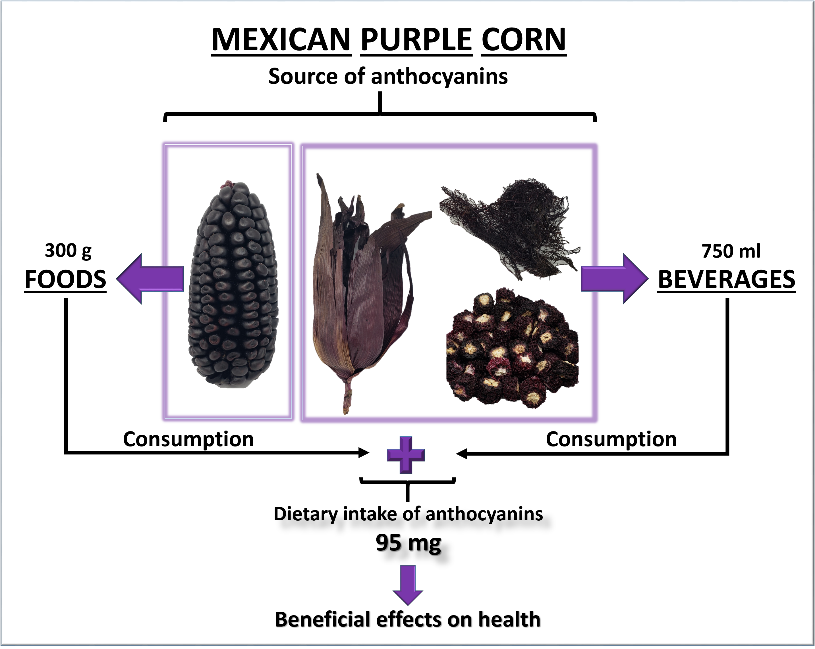Foods and beverages made from Mexican Purple Corn: a means to increase anthocyanins’ intake
DOI:
https://doi.org/10.31989/ffhd.v13i11.1194Abstract
Background: Anthocyanins (AAs) are natural pigments and bioactive compounds that are of broad interest due to their potential beneficial effects on health. In the market, while some foods, such as berries, provide important amino acid (AA) intakes, there is a growing trend to explore new sources. In Mexico, there is the Mexican Purple Corn, a variant capable to produce AAs in all the organs of the corn ear. We overlook that the preparation of foods and beverages from these raw materials may represent the development of potential functional foods and a means to increase the dietary intake of AAs.
Methods: We used spectrophotometry to quantify the total anthocyanins content (TAC) of three foods made from purple kernels, and six beverages prepared from corn husks+corncobs or corn silks. Foods consisted of elote (Mexican street corn or corn on a cob), a snack, and tortillas, while beverages involved what we named functional beverages, infusions, and hot teas. We compared their TAC values and estimated the AAs intake.
Results: Foods and beverages exhibited total antioxidant capacities (TACs) ranging from 3.0 mg to 119.5 mg per 100 g of biomass (p ≤ 0.05). Notably, most beverages demonstrated higher TACs than foods. The corn husks+corncobs infusion recorded the highest TAC, succeeded by functional beverages derived from amino acid (AA) extracts of corn husks+corncobs (67.04 and 93.12 mg of TAC per 100 g of biomass, p ≤ 0.05). Among hot teas and infusions, maceration in the latter resulted in a higher AA extraction. For foods, TACs varied from 4.3 to 38.4 mg of TAC per 100 g of biomass, and, similar to beverages, the preparation process influenced TAC. The roasted snack exhibited a higher AA content.
Conclusion: Mexican Purple Corn shows promise as a source for foods and beverages rich in amino acids (AAs). This crop represents an option to increase the daily intake of this flavonoid, and to acquire its potential bioactive effects. On a regular day, we can obtain 95 mg of TA from 300 g of purple corn-based foods, and 750 mL of different beverages made from corn husks, corncobs, and corn silks.

Keywords: Mexican Purple Corn, anthocyanins, corn husks, corncobs, corn silks, dietary source of anthocyanins.
Downloads
Published
Issue
Section
License
Any manuscripts or substantial parts of it, submitted to the journal must not be under consideration by or previously published in any other journal or citable form. Authors are required to ensure that no material submitted as part of a manuscript infringes existing copyrights or the rights of a third party. In submitting one's article in any form, the author has assigned the FFC publishing rights and has agreed to an automatic transfer of the copyright to the publisher. This is so that the FFC may create print option journals, for example, at the FFC’s discretion. If the author wishes to distribute their works by means outside of the FFC, for example within their community, they will have to place a request.
Correspondence concerning articles published in Functional Foods in Health and Disease is encouraged. While derivative works (adaptations, extensions on the current work, etc.) are allowed, distribution of the modified material is not allowed without permission from the FFC.